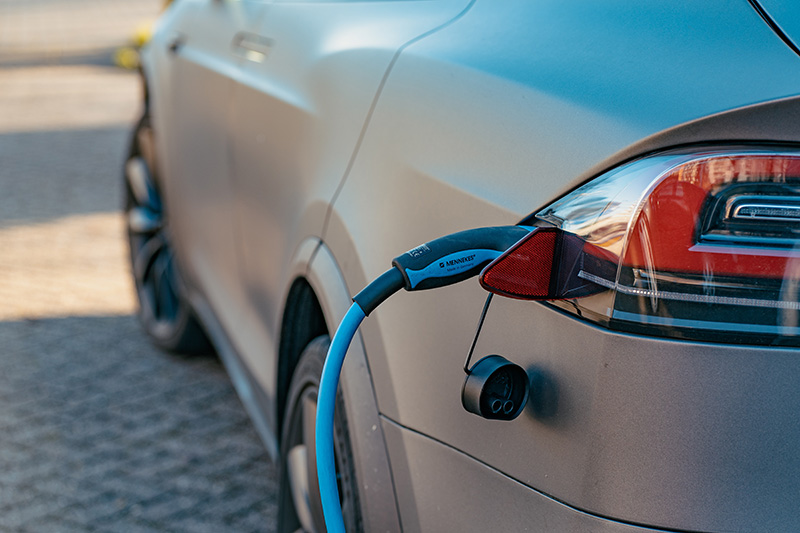“Transport underpins our society. It connects people, cities, countries and economies, fostering growth and employment. However, transport also damages the climate, the environment and human health. To reduce these impacts, Europe needs to move towards a more sustainable circular economy and decarbonised transport system.”
Source: Publication by the European Environment Agency (EEA) entitled – Electric Vehicles in Europe
It is well known that transportation is the largest source of air pollution, and the chemicals emitted from vehicles are, to no surprise, extremely harmful in all sectors, mostly for our environment and human health. Greenhouse gases, like carbon dioxide, methane and nitrous oxide, which are released into the atmosphere contributing to Climate Change[1]. This also results in Global warming[2] and the detrimental consequences are endless. Road traffic also creates traffic noise in urban and rural areas due to tyre and engine noise. Moreover, the production and manufacturing of vehicles uses a great quantity of energy and materials, which creates waste some of which is non-reusable or non-recyclable.
To combat this long-term demanding issue, on the 27th of October, 2022, the European Parliament and the Council of the European Union secured a Zero-emission target agreement for new cars and vans which enter the market, by 2035; a goal originally proposed by the European Commission as part of the Fit-for-55 Package. Practically, the 100% CO2 emissions reduction target suggests that from 2035, it will no longer be possible to place cars or vans with an internal combustion engine on the EU market, stimulating technological innovation and hinting towards Member States to better meet national non-polluting goals. From 2026, road transport will be covered by emissions trading, putting a price on pollution, stimulating cleaner fuel use, and re-investing in clean technologies. These targets would be included in amendments to Regulation (EU) 2019/631 of the European Parliament and of the Council of 17 April 2019 setting CO2 emission performance standards for new passenger cars and for new light commercial vehicles.
What does the Amended Proposal entail in practice?
From the year 2035, any vehicle which enters the EU market must be zero-emitting; meaning that it cannot emit any CO2 into the atmosphere, further contributing to the 2050 carbon-neutrality goal within the transport sector.
Vehicles already in possession and use will not be affected by this proposed Regulation, therefore not all cars and vans being used will be zero-emitting. Combustion-engine cars may be bought and sold second-hand in the market, however, costs of fuel or petrol, maintenance and insurance, among other costs, will be on the rise, to promote the disuse of polluting vehicles whist promoting the purchasing of alternative vehicles such as affordable electric cars.[3]
An electric motor functions with energy stored in a battery used to power the vehicle during acceleration. The electric motor may also act as a generator for the same battery-engine during deceleration. The battery in the electric vehicle, which is usually lithium-ion, would store the energy needed for the motor to power the car. The electric motor controller then governs the performance of the electric motor, regulating the amount of power being supplied from the battery to the motor itself. The vehicle would also possess regenerative brakes to keep the battery charged by converting that energy usually lost as heat during braking, into electricity. Other auxiliary car parts, such as e-power steering, braking support, lights, passenger cooling and heating systems, and battery heating and cooling systems, will further optimise energy usage.
Hybrid cars are more sustainable, efficient and reliable. Electricity prices are lower than petrol prices, making it more cost-effective to purchase an electric car. They additionally require less maintenance and service in cases of upkeep and repairs. Also, charging the battery is made easily accessible with the options of plug-in at home, or electric charging refuelling stations in various regions.
The Havana Effect of Zero Emission Vehicles in Europe
The introduction of banning any new combustion cars into the EU market can lead to a too-immediate transition toward all-electric vehicles and the EU might not be prepared for this sudden shift. Instead, through the so-called Havana effect,[4] consumers will opt for buying second-hand cars en masse, instead of purchasing new (and presumably more expensive) e-cars in the market. This would create a complete anti-climax in the system, since the amount of, and demand for, non-efficient combustion cars on the road and market would increase, boosting the longer usage of old combustion cars – thereby defeating the very scope of the proposed Regulation which is supposedly aimed to phase out combustion cars. Other availabilities for new technological developments to decrease car emissions have been side-lined and the reality of soaring energy prices and the limitation of raw material supply were disregarded. This would negatively result in a slow start to the planned boost in e-car sales.
By creating the outright ban of combustion cars by 2035, through the zero-emission target, the Commission would in reality, be implying that in the next decade, there must first be a gradual phasing out of the use of combustion cars, through their limitation in use, combined with a more feasible introduction of e-vehicles. This compares to the blatant, sudden and overly ambitious set goal to completely cease the usage of combustion-driven vehicles once and for all. In this regard, the EPP has promoted the introduction of a Life Cycle analysis (LCAs) Proposal, for the Commission to be able to consider and compare the actual emissions of combustion and electric vehicles more realistically, in the future. As the EPP righty pointed out, this amended proposal needs to be assisted by, and combined with a proper system of progress monitoring. Having LCAs of vehicle technologies infers the consideration of the lifespan of a vehicle and its overall environmental impact. This would aid to better indicate whether such amended Proposal will indeed be effective to combat global environmental issues. Otherwise, it is only natural that the amended proposal will show to be counter-productive because of the presentation of two extremes; the Zero emissions goal and its Havana Effect.
Essentially, is the Zero emission reduction target in the proposed Regulation too exaggerated to reach concrete and realistic goals until 2035?
Concluding remarks
It goes without saying that the European Commission has considered many options to, as much as possible, try and quickly solve challenging issues related to air pollution, the greenhouse effect and climate change, stemming from the over-usage of polluting transportation.
Although the manufacturing and the end-life of e-vehicles proves to be more energy-intensive, which essentially may expedite higher emissions of harmful chemicals in the atmosphere, such vehicles throughout their lifetime have no exhaust emissions, and this is primarily what the Clean Vehicle Agreement aims at achieving. However, other measures to reduce the overall dependence on transportation and vehicles must remain a top priority in the EU authorities’ discussions.
There is a clear net overall environmental benefit with introducing this system in the EU. The proposed Regulation will now require the finalisation of its formal adoption, following which the new legislation will be published in the Official Journal of the Union to enter into force.
“The reduced emissions during the electric vehicle’s lifetime are considered to outweigh the environmental effects of the production and end-of-life phases. Electric vehicles can therefore significantly reduce the adverse environmental effects of conventional passenger vehicles, as long as the electricity is from renewable sources.”
Source: Publication by the European Environment Agency (EEA) entitled– Electric Vehicles in Europe
[1] This is broadly defined as the long-term and human-driven shifts in temperatures and weather patterns, over a long-period of time
[2] This is defined as the collection of unwanted pollutants in the atmosphere and their increase leads to more heat-trapping or the absorption of sunlight or solar radiation, which further leads to the warming of the earth’s surface
[3] Consumers currently have the choice of selecting from five types of electric vehicles. These are: Conventional vehicles, Battery electric vehicles, Hybrid electric vehicles, plug-in hybrid electric vehicles, range-extended electric vehicles and fuel cell electric vehicles. More information on electric vehicles may be accessed here.
[4] In reference to the capital of Cuba, which after the 1959 Cuban Revolution, had a ban of the importation of American cars and car parts, introduced by Fidel Castro, leading to the presence of so many classic cars until this day.








